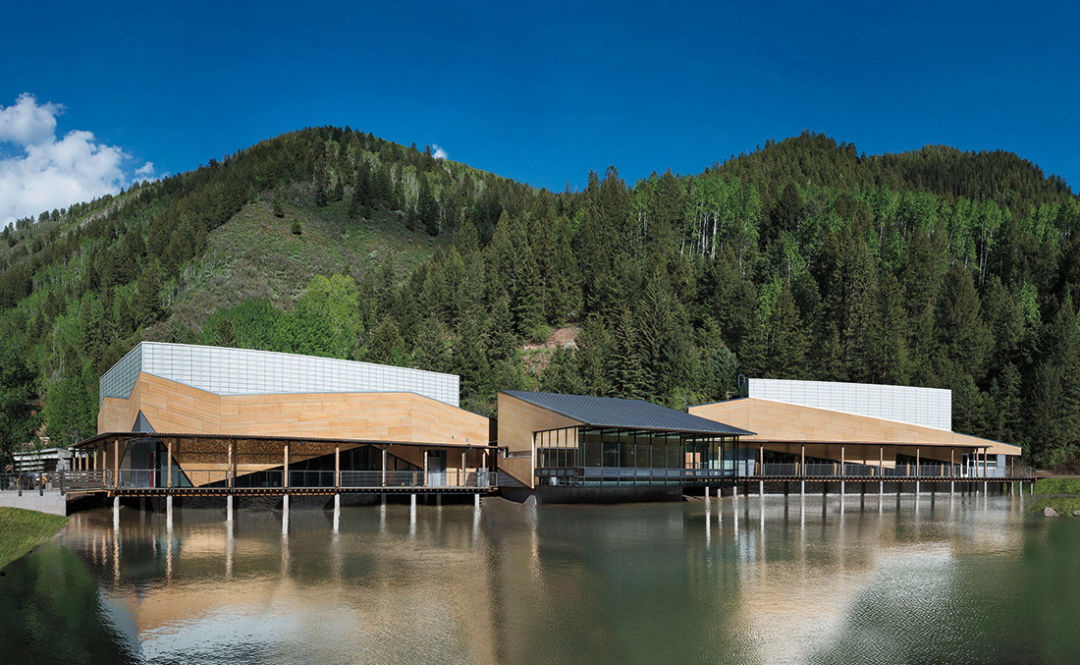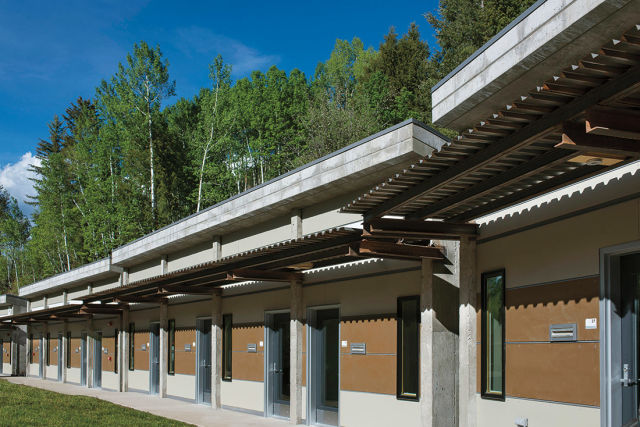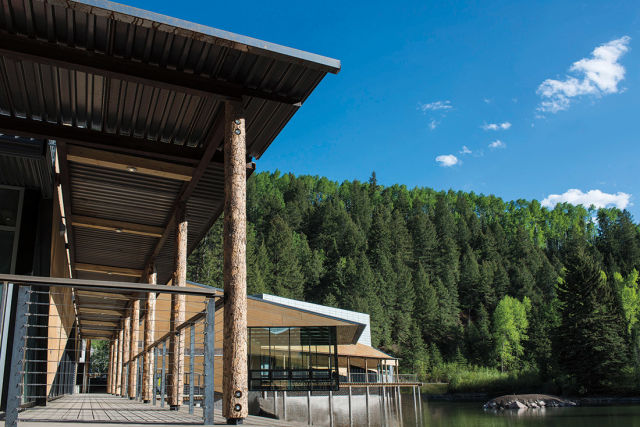Music for the Eyes

By August 18, the Aspen Music Festival and School season has ended. The festival’s new Bucksbaum Campus is cleared of students and activity, its rehearsal halls empty, its practice studios silent. Things stay that way until the Aspen Country Day School, which shares the campus, takes over in early September.

Those days between might be the ideal time to visit. While the campus was created for function—music-making in summer, general education the rest of the year—it also qualifies as visual art, representing as fulfilling an architectural achievement as exists in Aspen. Designed by the local Harry Teague Architects, the site respects the serenity and beauty of the surrounding Castle Creek Valley, but the buildings (60 percent of which are completed; phase two of construction is a few years off) also make a statement about how human activity, especially music, can enhance even a naturally sublime setting.
“You cannot ignore the environment and the beauty of the place,” says Teague. “I hope the buildings add to that, that they’re not just rehearsal halls. They’re energetic, youthful, spirited buildings.”

“Energetic” and “youthful” would not describe what stood on the campus before the $65 million renovation. The campus had been built in the mid-’60s in slapdash fashion. Among the design crew then, in charge of the practice studios, was Teague, who had not yet begun architecture school. “They just took over a place and did what they could,” he says of the original design by Aspen icon Fritz Benedict. The campus, the hub of student life and administration offices, had barely been touched since. Music Hall, the largest rehearsal facility, was decrepit enough that it was condemned three years ago.
Where it and other similarly worn-out structures once (barely) stood is now the visual center of a place that promises to be a tourist attraction in itself. “It’s a place that will be an iconic Aspen image for the next fifty years,” says Alan Richman, the project’s land planner. Sitting along the Great Pond—and in some places, jutting out over it—is a trio of halls that balance contemporary angles with integration into the wilderness, combining consideration for history with an optimistic look forward. Elements of the buildings also tie neatly with the Music Festival’s admired performance facilities in the West End: Harris Hall and the Benedict Music Tent, both designed by Teague.
Teague wants the campus to inspire musicians. “The orchestras see the ponds, see through the screens to the outdoors—there’s a connection between what they’re seeing and what they’re playing,” he says.
But it’s easy to see someone, not a musician, strolling the campus, absorbing the beauty of the buildings in nature, and being just as inspired.













































